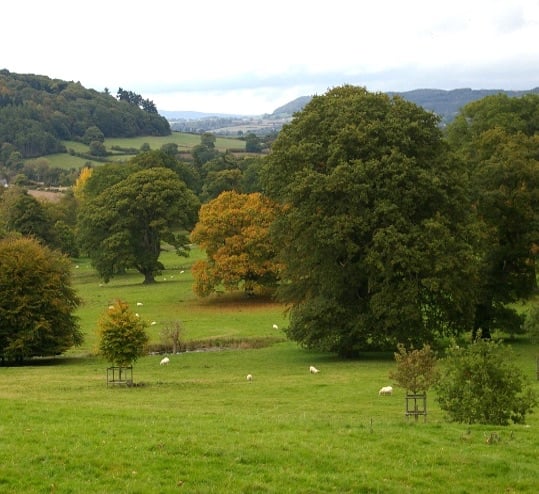Trees in the Environment
SCROLL DOWN FOR 'TREES SPECIES' 'TREES IN TOWNS' 'WOODLANDS' 'HEDGES' & 'ORCHARDS'
There are estimated to be about 3 billion trees in the UK, although in terms of the number of native species (i.e. those that have been here since the end of the last glaciation and were not introduced by humans) Britain is rather impoverished, with only about 32 species. However a vast number have been introduced since, with more than 3000 having been identified as growing successfully in the British Isles, as listed in the Tree Register of the British Isles. Most of these have been introduced in relatively recent time, but shown below is a list of tree species that existed before 1900, showing the periods when they were believed to have been introduced. Non-native species that have been present since before 1500 are known as Archaeophytes. Some of these may have been brought to these islands by early humans, others by later visitors to these shores, or indeed by invaders such as the the Romans. They brought us walnut and sweet chestnut and possibly sycamore, although some maintain this didn’t come over from its native European range until the Tudor era in the 1500s.
NATIVE & INTRODUCED TREE SPECIES IN BRITAIN
(Excluding species introduced after 1900)
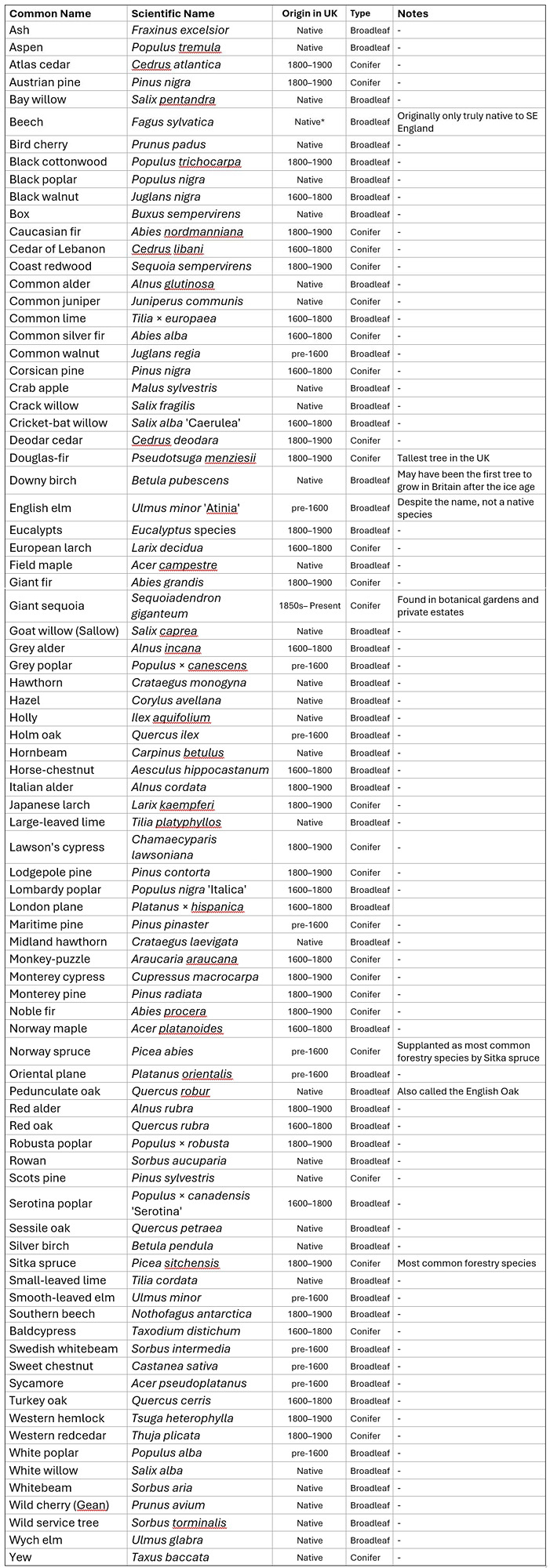
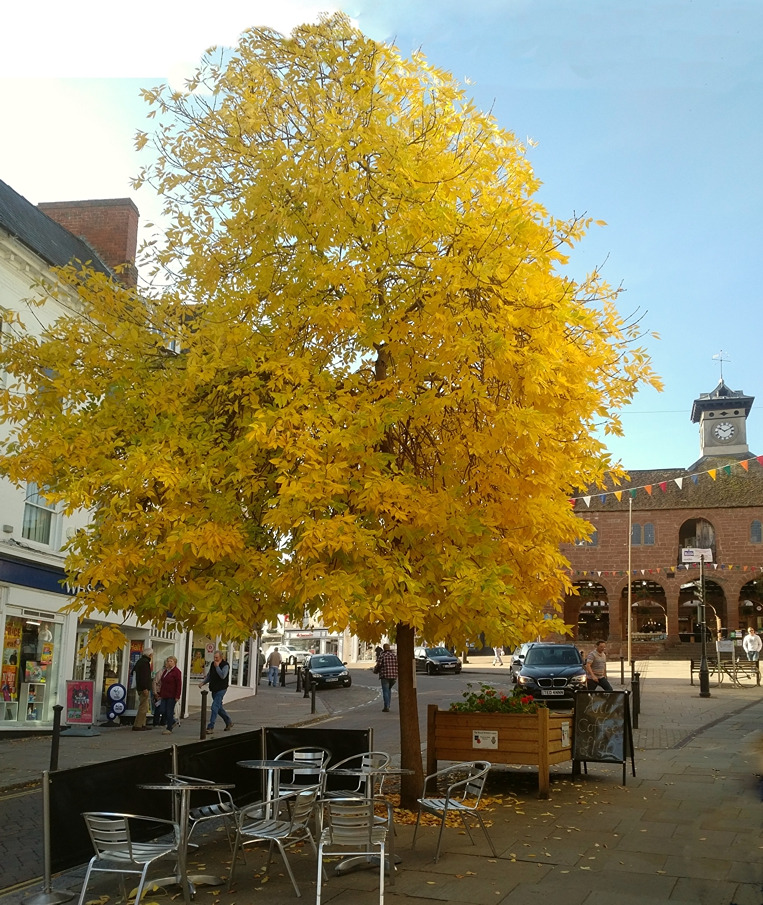
Trees in Towns
Trees in towns offer a wide range of benefits, making them essential for creating healthier, more livable urban environments, as is discussed in the BENEFITS OF TREES page. Thier vital contributions to the urban environments makes it essential to implement better planning, management, and community involvement in tree care.
While the County of Herefordshire has an essentially rural character, only about 43% of its 193,600 residents (as of 2012) live in truly rural ‘village and dispersed’ areas. About 94,500 live in the four largest settlements (Hereford City, Leominster, Ross and Ledbury) with 6,700 in Bromyard and Kington plus more in larger villages such as Colwall and Credenhill. Within these (comparatively) highly populated areas, trees form a vital backdrop and a link between town and country, are source of beauty and interest as well as having crucial environmental and social benefits.
Hereford city has a tree canopy cover of about 15.4%, slightly better than Gloucester (13.6%) and Worcester (14.6%) but not as high as Malvern at 30% and Shrewsbury at 22%..
But efforts have been underway for some time to improve tree cover in the city, with the aim of achieving a figure nearer 25%. . Indeed, back in 2019 a document was produced entitled More Trees for Hereford which provided evidence to inform tree and green infrastructure policies. That document can be downloaded from the link below.
Little has improved regarding green infrastructure across Hereford since 2019, mainly due to changes in administration at Herefordshire Council. The Independent Coalition did publish a consultation draft of a Hereford Masterplan in Spring 2023 that would have increased green infrastructure significantly, but since their leadership ended in May 2023, those plans were stopped, and new plans being drawn up by the current administration are currently unclear. We continue to lobby to increase numbers of trees and parks right across the city.
Woodlands
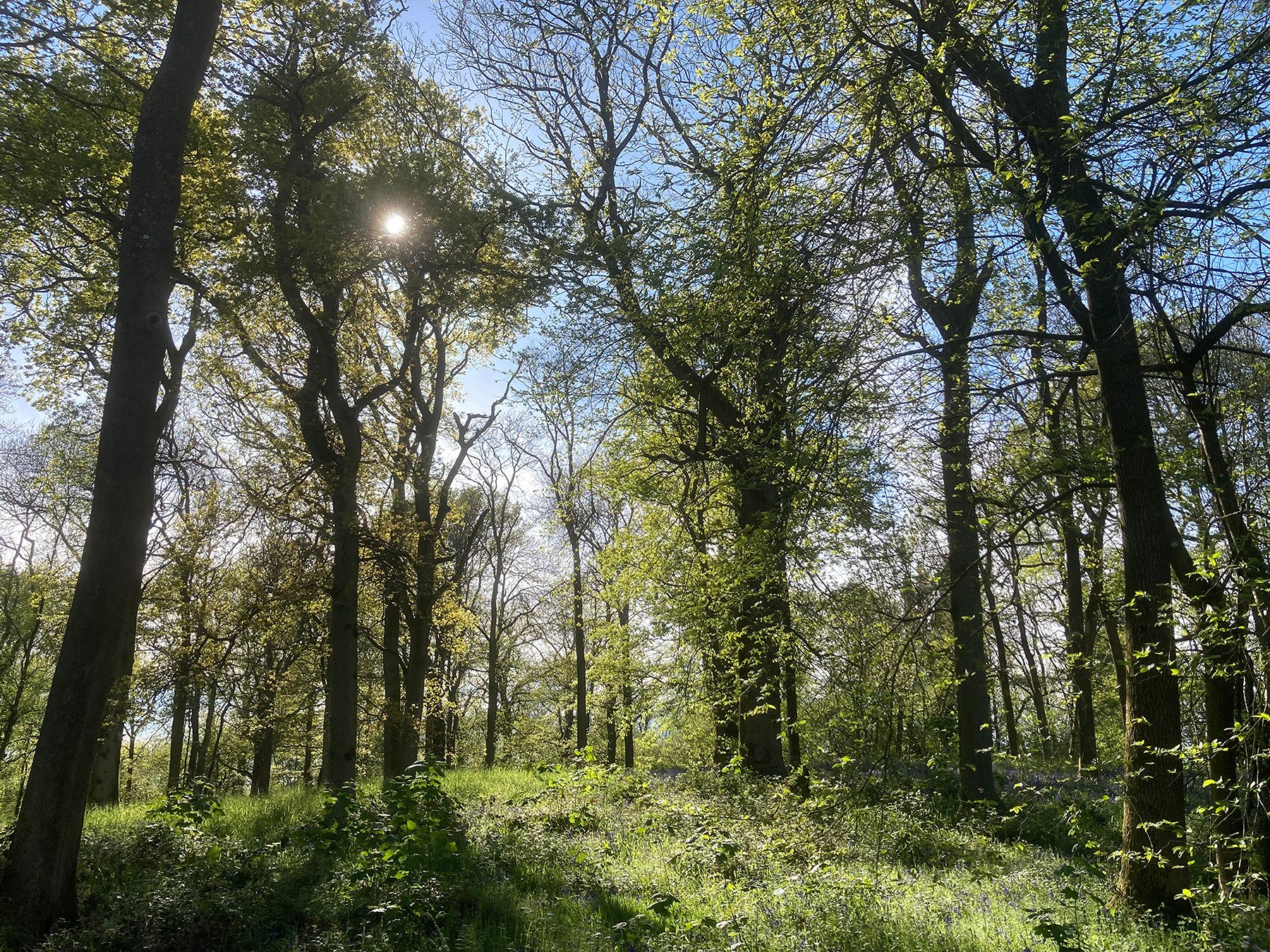
According to the Office for National Statistics, Herefordshire woodlands covers about 12% of its land area. This is slightly more than the 10% of England that is wooded but slightly less than the
The UK has an area of 243,610 square kilometres of which about 13% is covered by woodland. England is about 10% wooded while Herefordshire sits between these, with 12% of its land area under woodland, amounting to about 262 square kilometres.
Native,deciduous broadleaf trees, characterised by those that do not have needles, whilst not the only grouping of trees, will bring the best benefits of trees to Herefordshire for biodiversity as they will reflect best, the primary species and composition of trees from the local rural and wooded landscape.
Orchards
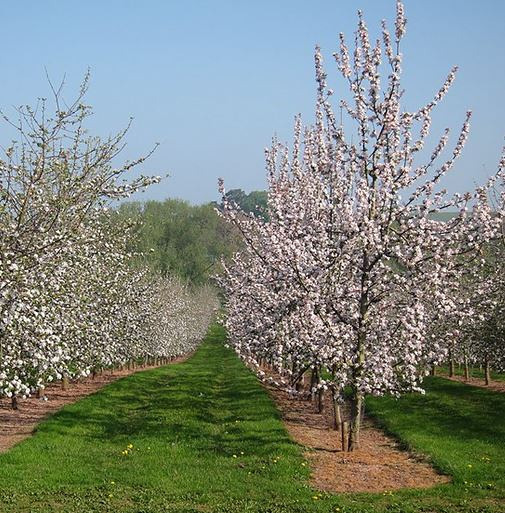
Orchards are special; places to experience and appreciate. Indeed in the seventeenth century John Beale attributed the long lives of Herefordians to"the apple trees purifying the air".
They have long been a way of life in Herefordshire, a treasured part of our landscape and communities, the basis of people's livelihoods and a foundation of the local economy, particularly our cider industry. Back in 1664 the diarist John Evelyn wrote "Herefordshire has become in a manner an entire orchard" and today we still have more than 3,000 orchards, more than any other county in the UK.
In a recent study of six Herefordshire orchards, local nature recording groups found an average of 150 different species in each orchard and the Goldeneye lichen, thought to be extinct in the UK, was recently found in the top of an apple tree. Orchards are also important stores for carbon both in the trees themselves and in the unploughed land beneath them, all the while providing us with food and drink.
Trees outside woodland
